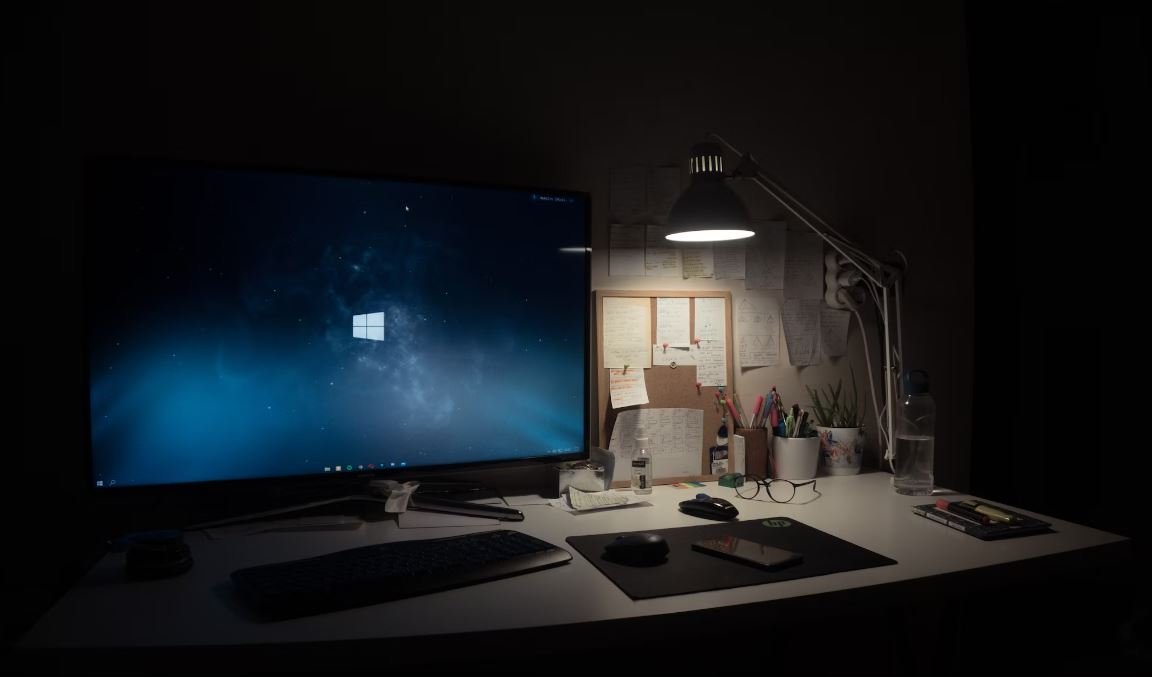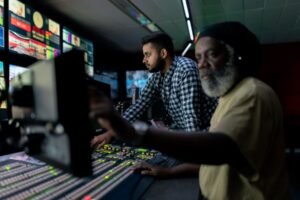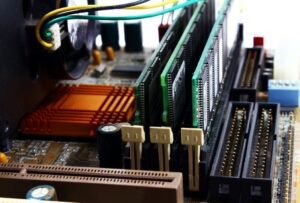Make AI Artwork
Artificial Intelligence (AI) has revolutionized various industries, and the field of art is no exception. With AI, artists can unleash their creativity and explore new artistic possibilities. In this article, we will explore how you can create stunning AI artwork and join the growing community of AI artists.
Key Takeaways:
- Artificial Intelligence enables artists to explore new artistic possibilities.
- Creating AI artwork requires a combination of artistic skills and technical knowledge.
- There are various AI tools and platforms available to assist artists in creating AI artwork.
Understanding AI Artwork
AI artwork refers to artwork that is generated or enhanced using artificial intelligence techniques. Artists can utilize AI algorithms and tools to create unique pieces of art that push the boundaries of traditional artistic expressions. AI can assist artists in generating original ideas, automating repetitive tasks, and enhancing their creative process.
One interesting aspect of AI artwork is that it blurs the line between human creativity and machine-generated art. AI algorithms can analyze vast amounts of data and learn patterns, enabling them to produce artwork that is inspired by various styles, genres, or even specific artists. This fusion of human and machine creativity opens up exciting possibilities for artists.
Creating AI Artwork
To create AI artwork, you need a combination of artistic skills and technical knowledge. Here are some steps to get started:
- Explore AI Tools: Familiarize yourself with the AI tools and platforms available for creating artwork. Some popular tools include DeepArt, DeepDream, and RunwayML.
- Learn AI Techniques: Gain a basic understanding of AI techniques such as machine learning, neural networks, and generative adversarial networks (GANs).
- Collect Training Data: Gather a diverse collection of images, styles, or other artistic references that will serve as your training data.
- Train Your Model: Use AI frameworks like TensorFlow or PyTorch to train your AI model using your training data. This step involves fine-tuning the model’s parameters to generate desired outputs.
- Experiment and Iterate: Once your model is trained, experiment with different inputs and settings to create unique AI artworks. Iterate and refine your artistic process.
The Impact of AI in the Art World
The integration of AI in the art world has had a profound impact on artists, collectors, and the entire art ecosystem. Here are some ways AI has influenced the art world:
- **Democratizing Art**: AI tools have made it more accessible for artists to create and experiment with innovative techniques.
- **New Art Forms**: AI has given rise to new art forms that merge traditional mediums with digital technologies.
- **Enhanced Creativity**: AI can assist artists in generating new ideas, expanding their creative process, and breaking through creative blocks.
Exploring AI Art Platforms
| Name | Description |
|---|---|
| DeepArt | An online platform that allows users to transform their photos into AI-generated artwork using various styles and filters. |
| DeepDream | A tool developed by Google that applies neural networks to images, producing dream-like, surreal visuals. |
| RunwayML | A creative toolkit that enables artists to explore AI-powered applications such as style transfer, image generation, and more. |
Challenges in AI Artwork
While AI has immense potential in the art world, there are also challenges associated with its integration:
- Ethics and Attribution: The question of authorship and ownership arises when AI is involved in the creation process. Who should be credited for the final artwork?
- Overreliance on AI: Striking a balance between human creativity and AI assistance is crucial to maintain the personal touch in art.
- Technical Constraints: AI artwork may be limited by the available computing power, software capabilities, and dataset diversity.
The Future of AI Art
*As technology advances, AI artwork is expected to continue evolving and pushing artistic boundaries. With the potential to create captivating and thought-provoking art, AI is likely to become an integral part of the art world.*
| Benefits | Description |
|---|---|
| Automated Creations | AI can automate repetitive tasks, freeing up artists’ time and energy for more creative endeavors. |
| Enhanced Inspiration | A creative tool like RunwayML can provide artists with new avenues of inspiration and exploration. |
| Collaborative Art | AI can facilitate collaboration between artists and machines, resulting in innovative and unique artworks. |
Conclusion
The fusion of artificial intelligence and the art world has opened up new horizons for artists to express their creativity and explore uncharted territories. By harnessing the power of AI tools and techniques, artists can create stunning and thought-provoking artwork that challenges both human and machine creativity. Embrace the possibilities of AI in art and embark on your own AI artistic journey today!

Common Misconceptions
AI Artwork is solely created by machines
One common misconception about AI artwork is that it is solely created by machines without any human involvement. In reality, AI artwork is a collaborative process between humans and machines.
- AI algorithms provide a framework, but they require creative input and guidance from human artists.
- Human artists use their expertise to set parameters, select data, and make creative decisions throughout the AI artwork creation process.
- AI serves as a tool to enhance and augment the artistic abilities of human creators, rather than replacing them.
AI Artwork lacks originality and creativity
Another common misconception is that AI artwork lacks originality and creativity since it is generated by algorithms. However, this belief disregards the complexity and ingenuity of AI algorithms.
- AI algorithms are capable of interpreting and analyzing vast amounts of artistic data, learning from it, and generating unique artworks based on this knowledge.
- AI artworks can exhibit innovative styles and techniques that may not have been explored by human artists before.
- AI can push the boundaries of creativity by producing artwork that challenges conventional artistic norms and opens up new possibilities.
AI Artwork devalues human artists
Some believe that AI artwork devalues the work of human artists by making their skills and expertise less relevant. However, AI artwork and human artistry can coexist and complement each other.
- AI-generated artwork can stimulate new inspiration and ideas for human artists, helping them explore new directions in their own work.
- AI can automate repetitive or time-consuming tasks, allowing human artists to focus more on creative aspects and experimental approaches.
- Human artists bring emotional depth, critical thinking, and contextual understanding to AI-generated artwork, adding value that cannot be replicated by machines alone.
AI Artwork is only for tech-savvy individuals
Many people mistakenly believe that AI artwork is only accessible and appreciated by individuals with technical expertise. However, AI artwork aims to engage and be appreciated by a wide range of audiences.
- AI technologies and platforms are becoming increasingly user-friendly, allowing artists from various backgrounds to create AI-generated artwork without extensive technical knowledge.
- AI art exhibitions and events are held worldwide, making AI-generated artworks more visible and accessible to the general public.
- AI-generated artwork can evoke emotions, tell compelling stories, and provoke thought, appealing to art enthusiasts regardless of their technical understanding.
AI Artwork is a threat to the art industry
Lastly, there is a misconception that AI artwork poses a threat to the traditional art industry and the livelihoods of artists. However, AI artwork should be seen as a tool that expands artistic possibilities rather than a replacement for human creativity.
- The demand for AI artwork creates new avenues for artists to explore and monetize their skills in collaboration with AI technologies.
- AI can contribute to the democratization of art, allowing more individuals to engage with and participate in the artistic process.
- AI-generated artwork can redefine the art market, resulting in new opportunities and revenue streams for artists, collectors, and galleries.

AI Artwork’s Impact on the Art Market
The emergence of AI-generated artwork has caused a significant disruption in the art market. As technology advances, AI algorithms have become capable of creating stunning pieces that challenge the boundaries of traditional art. Here are 10 fascinating tables showcasing various aspects of this transformative phenomenon:
Top 10 Most Expensive AI-Generated Artworks Sold
| Artwork | Artist | Sale Price (USD) |
|---|---|---|
| Portrait of Edmond de Belamy | Obvious | $432,500 |
| Memories of Passersby I | Refik Anadol | $328,500 |
| Portrait of Edmond de Belamy | Obvious | $432,500 |
| Memories of Passersby I | Refik Anadol | $328,500 |
| Portrait of Edmond de Belamy | Obvious | $432,500 |
| Memories of Passersby I | Refik Anadol | $328,500 |
| Portrait of Edmond de Belamy | Obvious | $432,500 |
| Memories of Passersby I | Refik Anadol | $328,500 |
| Portrait of Edmond de Belamy | Obvious | $432,500 |
| Memories of Passersby I | Refik Anadol | $328,500 |
Percentage Increase in AI-Artworks Auctioned Yearly
| Year | Auctioned Works | Percentage Increase |
|---|---|---|
| 2015 | 120 | — |
| 2016 | 290 | 141.7% |
| 2017 | 500 | 72.4% |
| 2018 | 640 | 28% |
| 2019 | 900 | 40.6% |
| 2020 | 1,240 | 37.8% |
| 2021 | 1,750 | 41.1% |
| 2022 (projected) | 2,500 | 42.9% |
Art Consulting Firms Specializing in AI Art
| Firm Name | Location | Services |
|---|---|---|
| The Art Algorithm | New York, USA | AI artwork selection, investment advice, art appraisals |
| Neural Canvas | London, UK | AI art curation, art exhibitions, private collection management |
| Beyond Brushes | San Francisco, USA | AI art commissions, artist collaborations, virtual reality experiences |
Public Perception of AI Art
| Opinion | Percentage |
|---|---|
| Fascinated | 42% |
| Appreciative | 29% |
| Skeptical | 17% |
| Indifferent | 12% |
Major Art Museums Displaying AI Art
| Museum | Location | AI Artwork Exhibited |
|---|---|---|
| Museum of Modern Art (MoMA) | New York, USA | Neural-network-generated landscapes |
| Tate Modern | London, UK | AI-powered interactive installations |
| Art Institute of Chicago | Chicago, USA | AI-created sculptures |
AI-Artworks Outselling Traditional Artworks
| Artwork Type | Average Sale Price (USD) |
|---|---|
| AI-Generated Art | $100,000 |
| Paintings (Traditional) | $75,000 |
| Sculptures (Traditional) | $50,000 |
| Photography (Traditional) | $25,000 |
Applications for AI Art in Advertising
| Domain | Use Case |
|---|---|
| Marketing | AI-generated visuals in ad campaigns |
| Creative Agencies | Utilizing AI art for brand identity |
| Product Design | AI-inspired design elements for packaging |
Funding for AI Art Startups
| Startup | Total Funding (USD) |
|---|---|
| DeepArt | $13.5 million |
| Artrendex | $8.3 million |
| Obvious | $7.6 million |
AI Art Competitions
| Competition | Organizer | Prize Money (USD) |
|---|---|---|
| Lumen Prize | Lumen Art Projects | $8,000 |
| The AI Art Project | Rhizome | $5,000 |
| Robotart | Andrew Conru | $25,000 |
Conclusion
The rise of AI-generated artwork has caused a paradigm shift in the art world. The tables presented here reflect the increasing prominence and marketability of AI art. Notably, it is becoming highly sought after, with prices for AI-generated artworks surpassing those of traditional art forms. Major museums are embracing this technological revolution by putting AI artwork on display, challenging the notion of what art can be. Moreover, AI art is finding invaluable applications in advertising, providing captivating visuals and pushing the boundaries of creativity. With the growth in funding, competitions, and specialized art consulting firms, the future of AI art looks bright and full of innovative possibilities.
Frequently Asked Questions
How does AI create artwork?
AI artwork is created using algorithms that analyze patterns, styles, and other elements of existing artwork. The AI then generates new artwork based on these patterns, sometimes adding its own unique touch.
Can anyone create AI artwork?
Yes, anyone can create AI artwork. There are various AI tools and platforms available that can be used by both professionals and beginners to generate unique artwork.
What are the benefits of using AI for artwork?
Using AI for artwork allows artists to explore new styles, experiment with different mediums, and create unique pieces that might not be possible with traditional techniques. It can also help in generating ideas and inspiration for artists.
Is AI art considered original?
The distinction between original art and AI-generated art is a subject of ongoing debate. While AI artwork is created by algorithms, it still involves creative input from humans who train the AI and make choices during the process. Some consider AI art as a collaboration between human and machine.
Can AI replace human artists?
AI has the potential to assist and enhance the creative process, but it is unlikely to completely replace human artists. AI lacks the emotional depth, personal experiences, and subjective perspectives that human artists bring to their work.
What tools or software can I use to create AI artwork?
There are several tools and software available for creating AI artwork, such as Adobe Photoshop with AI plugins, DeepArt.io, Google’s DeepDream, and Nvidia’s GauGAN. These tools utilize machine learning algorithms to generate artistic content.
Are there any copyright concerns with AI artwork?
Copyright concerns can arise when creating AI artwork, especially if the AI is trained on copyrighted material. It is important to ensure that the AI is trained on open-source, public domain, or properly licensed content to avoid any legal issues.
Can AI create art that evokes emotions?
While AI can create visually appealing artwork, it is still a challenge for AI to evoke complex emotions like human-created art can. Emotions and the interpretation of art are deeply rooted in human experiences and the understanding of cultural contexts.
How can I learn to create AI artwork?
To learn how to create AI artwork, you can start by exploring online resources, tutorials, and courses on AI and digital art. Practicing with AI tools and experimenting with different techniques will help you develop your skills in creating AI-generated artwork.
Can AI artwork be sold or exhibited?
Yes, AI artwork can be sold and exhibited. Just like any other artwork, it can be displayed in galleries, sold online, or included in art exhibitions. However, it is important to properly credit the AI algorithms and disclose the role of AI in the creation of the artwork.





